Exposed brickwork construction in Termitary House in Extreme Climate of Da Nang, Vietnam is enveloped in perforated Exposed Brickwork Construction in Termitary House walls. Vietnamese architects, Tropical Space, refurbished an old house and added a perforated grille of brickwork to an existing concrete slab structure, while referencing sacred sites in the region and the “architecture” of termite nests. The Exposed Brickwork Construction in Termitary House, as it is called, is inspired by the concept of a Termite Nest, and as such has a large, open living area at the core of the house, branching out to the other functional spaces.
If, we get basic planning and architectural introduction in shortest way like-This living area houses sitting, dining and cooking areas at its center, with the main entrance at one end and an en-suite bedroom at the other, shielded solely by a fabric curtain.Two staircases lay along the side wall of the living area, going in opposite directions, one leading up to an en-suite master bedroom and the other to yet another en-suite room.
Exposed Brickwork Construction in Termitary House
Exposed Brickwork Construction in Termitary House Project info:
- Architects: Tropical Space Co.,Ltd
- Location: Thanh Khê District, Da Nang, Vietnam
- Architects In Charge: Nguyen Hai Long, Phan Quang Vinh, Tran Thi Ngu Ngon, Trinh Thanh Tu
- Area: 80.0 sqm
- Year: 2014
- Photographs: HiroyukiOki
- Construction: LeCon
- Site area: 190 sqm / 2045 sqf
- Building area: 80 sqm / 861 sqf
Design Inspiration and Derivations:
Inspired by the termites’ special ability to build their nests in the local area, the architect has designed the house with a large sharing space in the center where a cooking counter, a dining table, and an entertaining corner are found.
According to the architects, the orange-red bricks reference the baked-brick towers built on sacred sites in the region during the Champa Kingdom between the 4th and 15th centuries, while the plan – with a living space protected in its center.
The two side walls that face neighboring properties, are made using solid block-work. Individual bricks sit proud from the facade, creating a pattern that references the street- and garden-facing aspects.
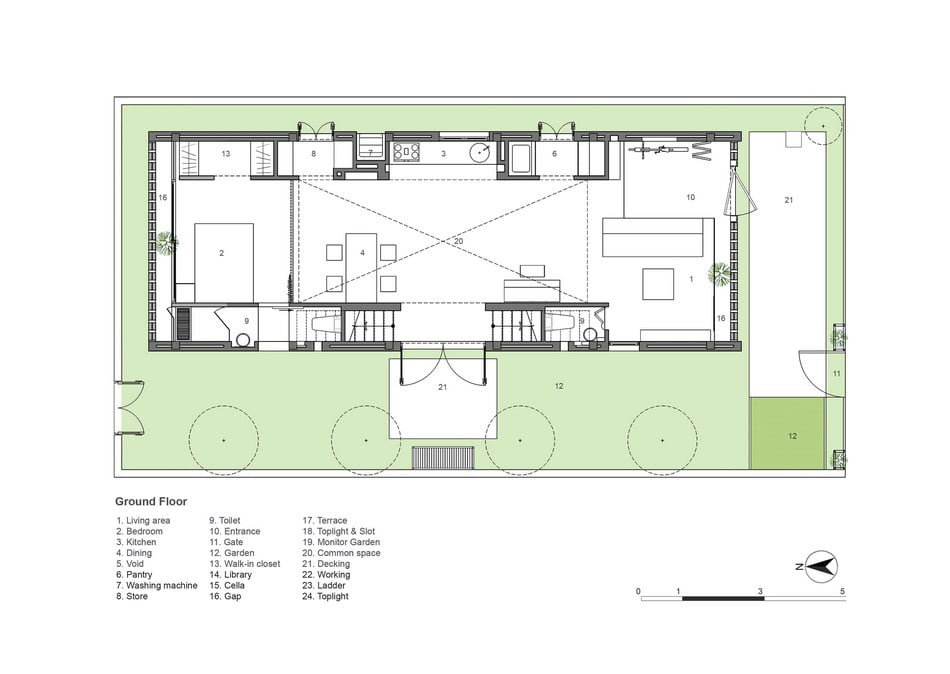


A combination of solid and perforated block-work provides different levels of privacy for each space.
This “lobby” then leads to different functional areas in the house such as the rest room, the living room, and the bedrooms. All are connected artistically and comfortably. The mezzanine is where another bedroom, an altar room, and a small library are found.
An open plan living and dining area sits in the center of the space. The master bedroom, two bathrooms, storage areas and staircases branch off this central area and sit against the walls of the building, acting as a buffer for the worst of the weather.
Space Planning:
Slender skylights and relatively narrow windows offer light and ventilation while a combination of solid and perforated block work provides some degree of privacy but still allows for effective communication between the residents across the house.
Topped off by a lush green roof, the termitary house is a really compact design that uses space optimally and allows for maximum flexibility. The attic is an open relaxing area with curtains of vines. Designed for three people, the house does not need a lot of partitions except the ones for the altar room and the bedrooms.
Concrete ceilings and terazzo flooring in dark colors contribute to an overall sober look and feel.
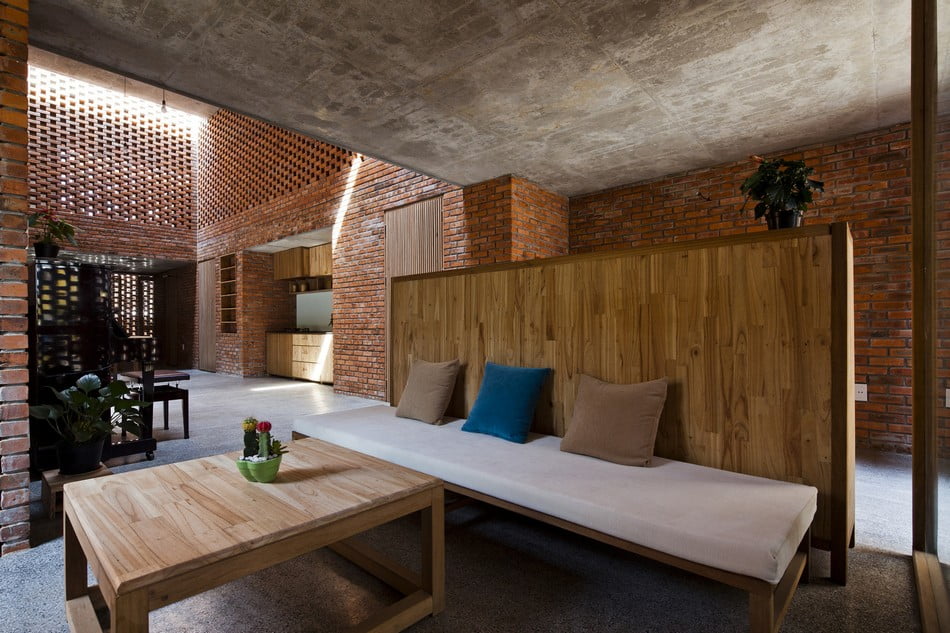
This arrangement is designed to deal with the fluctuating climate of the area, which varies between two extremes – a dry hot season and a rainy season with several tropical storms each year.
Meanwhile, in the sharing areas in the house, the family members can still see and chat to each other through the walls with holes arranged as randomly but scientifically as in an actual termitary.
Plants taken from the original gardens are integrated into the graveled landscaping around the property to “retain some familiar features for the owners.” All furniture was made from the timber rescued from the roof of the old house on the site. Enjoy the photos and tell us what you think!
Climatic Condition of Area:
The Termitary House was built in Da Nang, a central coastal city of Viet Nam. The climate in this area is rather extreme in the way it varies significantly between the sunny season and the rainy one.
It is also influenced by a lot of tropical storms every year. Besides, Da Nang is well-known for the remains of Champa baked-brick Towers (during the Ancient Champa Kingdom), constructed during the time from the 4th century to the late 15th century. Of all, “Mỹ Sơn” Holy land is the most well-known.
Material Exploration:
The house is mainly built with baked bricks which are also a traditional material in the local area. They are the very material to have been used for the construction of the mysterious ancient Champa towers.
The ceilings are casted with original concrete, and the floors are covered with terrazzo in dark colors. All furniture is made with the timber from the roof of the old house, which helps make the total actual cost of the construction a significant saving (about under 22,000 usd)
Glazing set behind the perforated walls creates a double skin that protects against wind and rain, and also makes space for two slim graveled patios at the front and back of the house that help control ventilation.
That the walls are entirely built with baked bricks makes the house cool in the summer; for this kind of bricks can function as a certain factor to keep the humidity for the entire house.
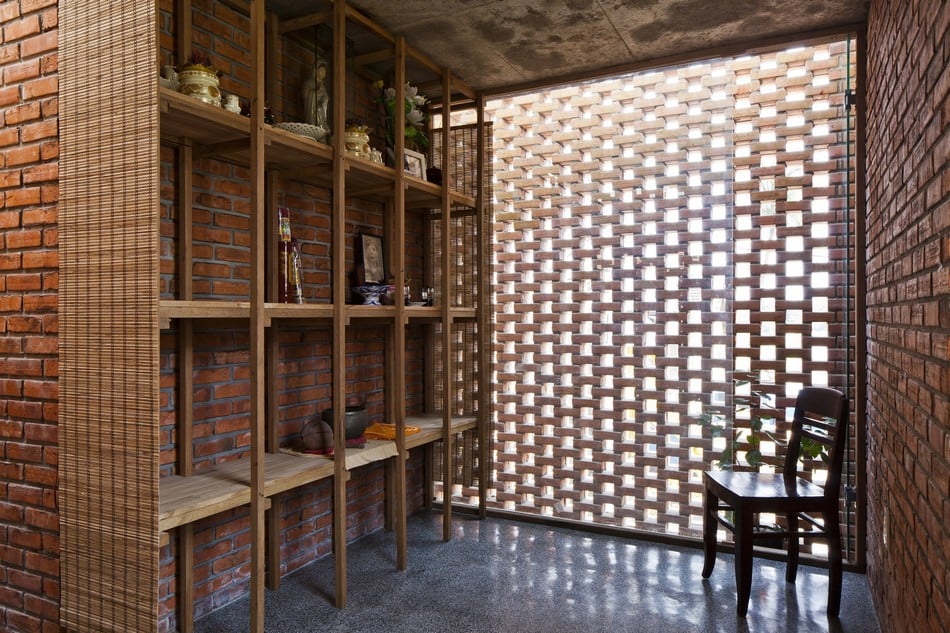
The special constructing technique of “double skins” with two layers of one brick wall covering outside and one glass-aluminum frame inside creates a space within a wall, which functions as a buffer layer at both gables.
Besides, the arrangement of the toilets and the storage rooms along the walls not only helps block the strong winds during the stormy season but also leads them towards and through the gaps straight to the roof. This is due to the remarkable difference in pressure.
On the roof, architects use a system of girders and upside down floors to create a small garden for plants – an ideal place for the whole family to relax and enjoy the breeze during the hot and muggy summer days.
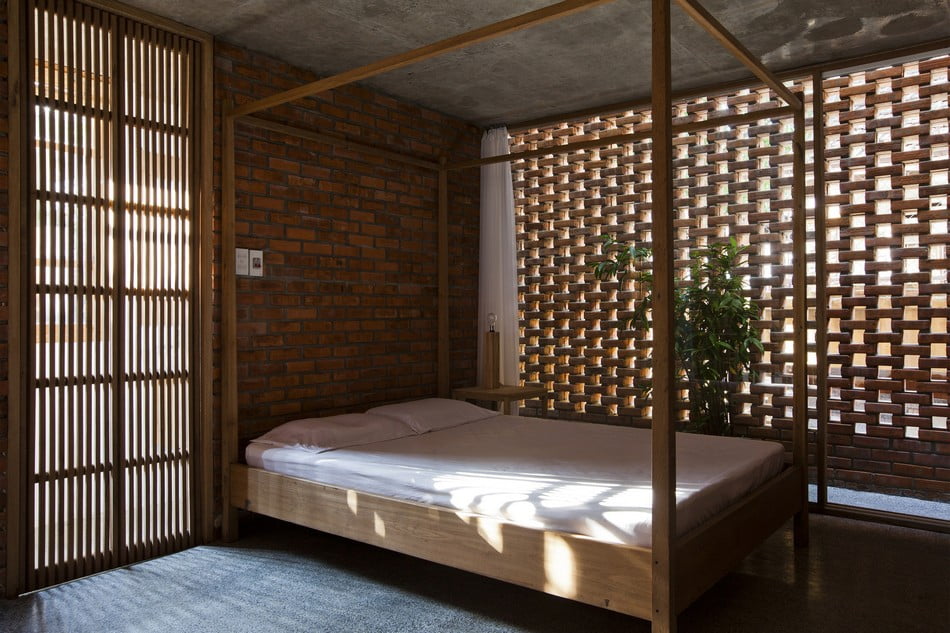
The special design of the baked-brick walls with a lot of holes, together with the large inter floor space, allows breeze and light to get to all the corners of the house, even the hardest-to-access areas. The house owners are also able to enjoy the blue sky during the daytime or the moonlight night-time from the living room, the dining table or the kitchen.
Light and Ventilation Consideration:
At different times during the day, the variety of the light intensity getting through the inter-floor holes makes the brick wall colors change from the light red in the morning, red at noon, dark red in the afternoon and more purple in the late afternoon and early evening.
Artificial light shines through the brickwork of the front and rear facades at night time, while during the day natural light shines through to cast patterned shadows across the interior walls.
“In the evening and at night, the house looks like a giant lantern with lights here and there from the holes,” said the architects.
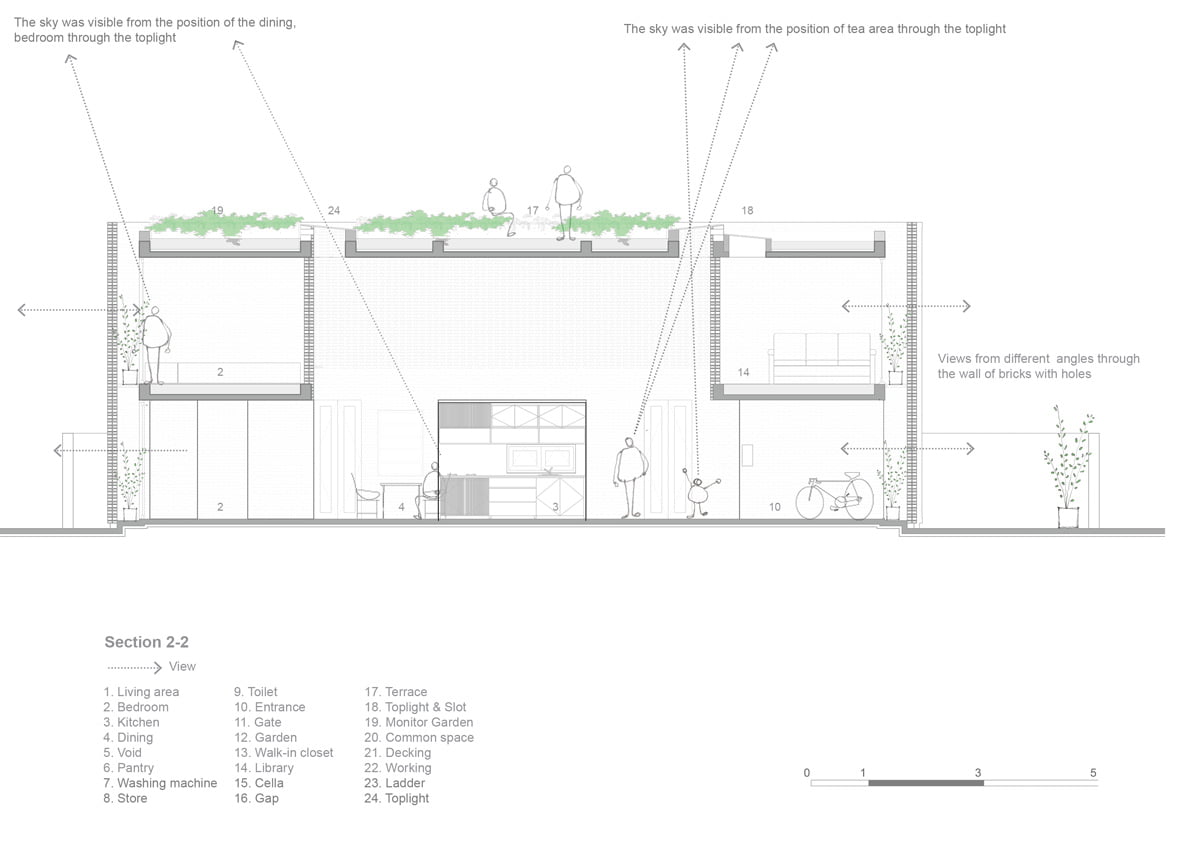
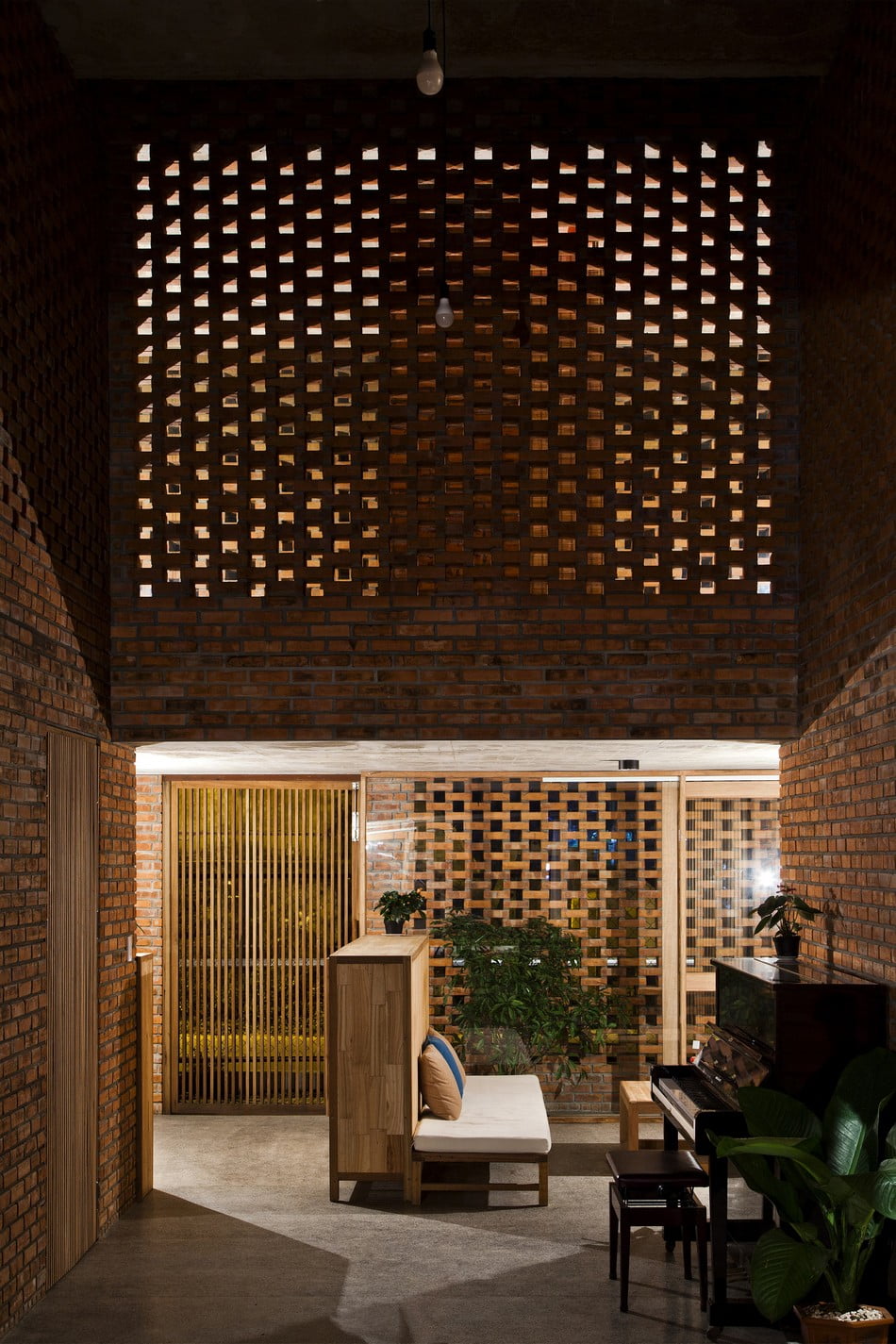
In the evening and at night, the house looks like a giant lantern with lights here and there from the holes. The surrounding brick walls are decorated with some rough bricks to make shadows. This improve the beauty and charm of every single samel-brick regarding its own shape and color.
“The special design of the baked-brick walls with a lot of holes, together with the large inter-floor space, allows breeze and light to get to all the corners of the house, even the hardest-to-access areas,” explained the architects.
Both the yard and the garden are covered with coarse gravels with some of the plants (which are rearranged) from the old house in order to retain some familiar features for the owners. Taking the best advantage of ventilation, lighting system and natural air conditioning mechanism has made The Termitary House optimize the positive elements of an effective tropical work. ( By Ly Kha Ngo )
Image Gallery:
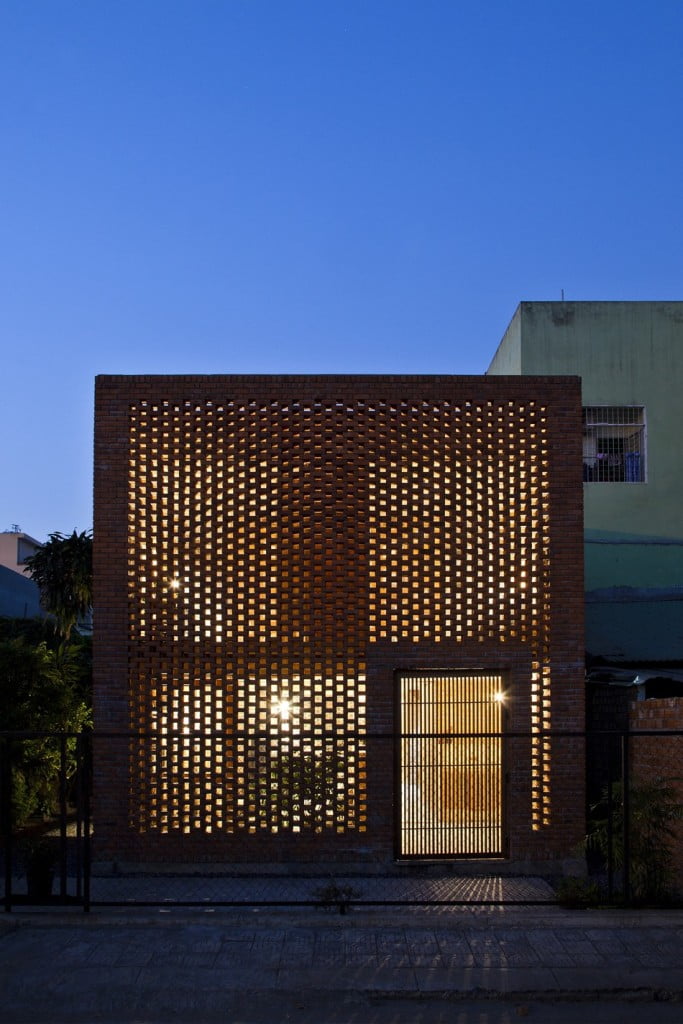
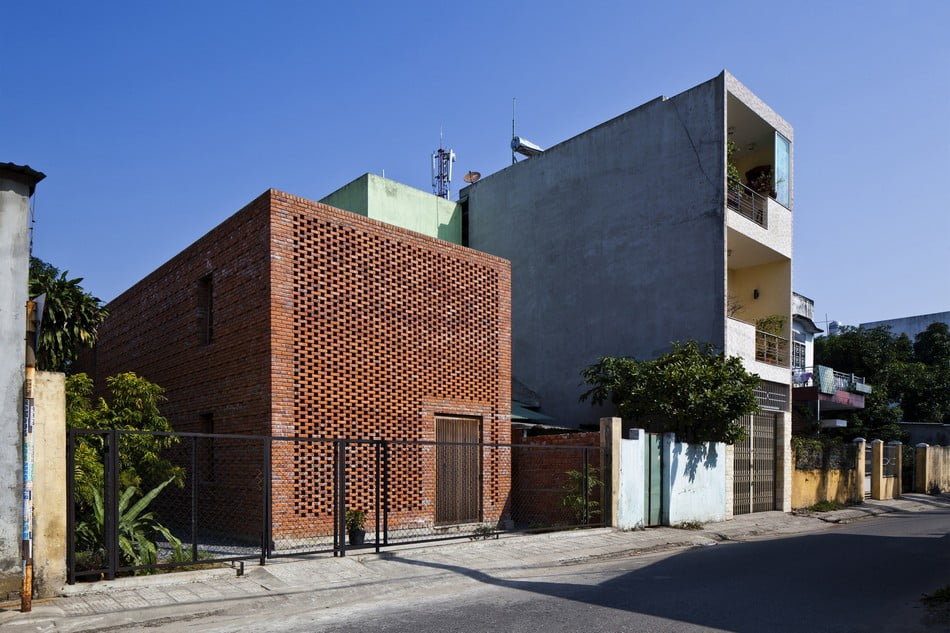
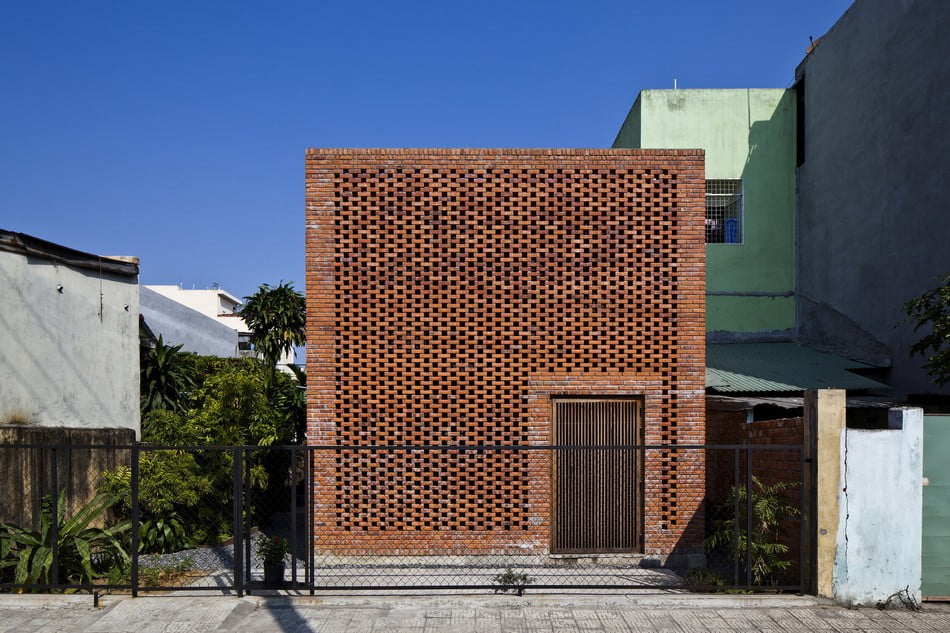
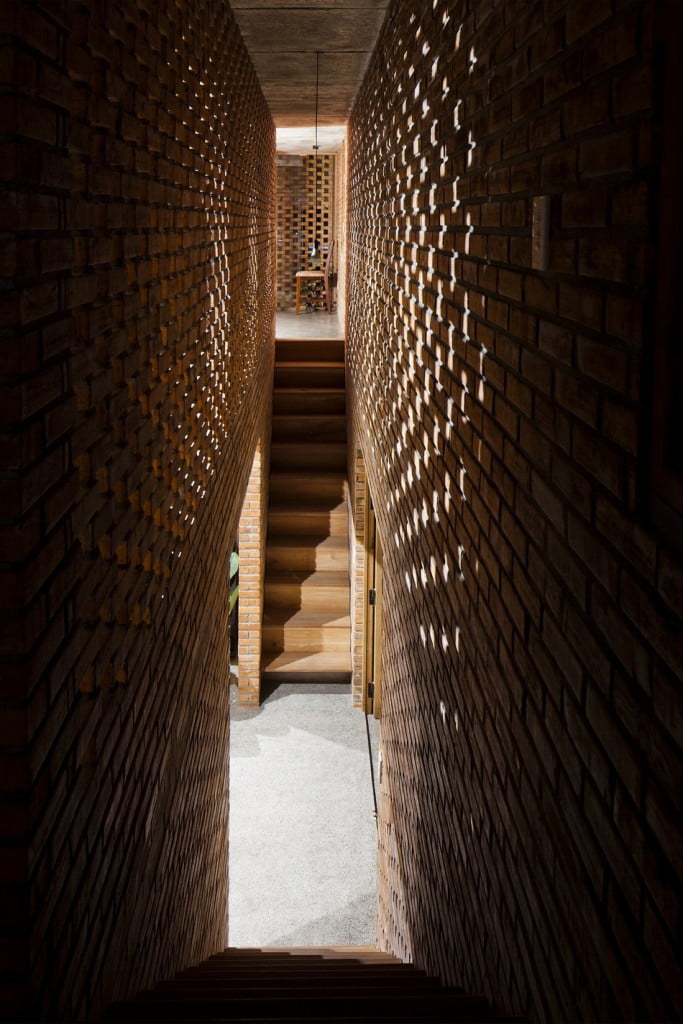

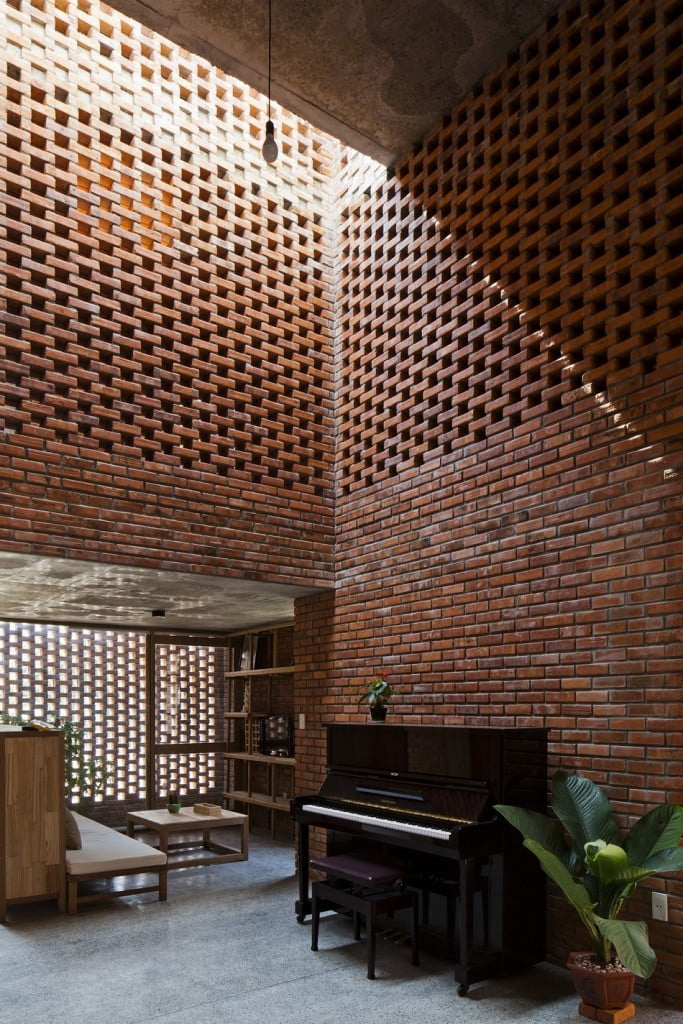
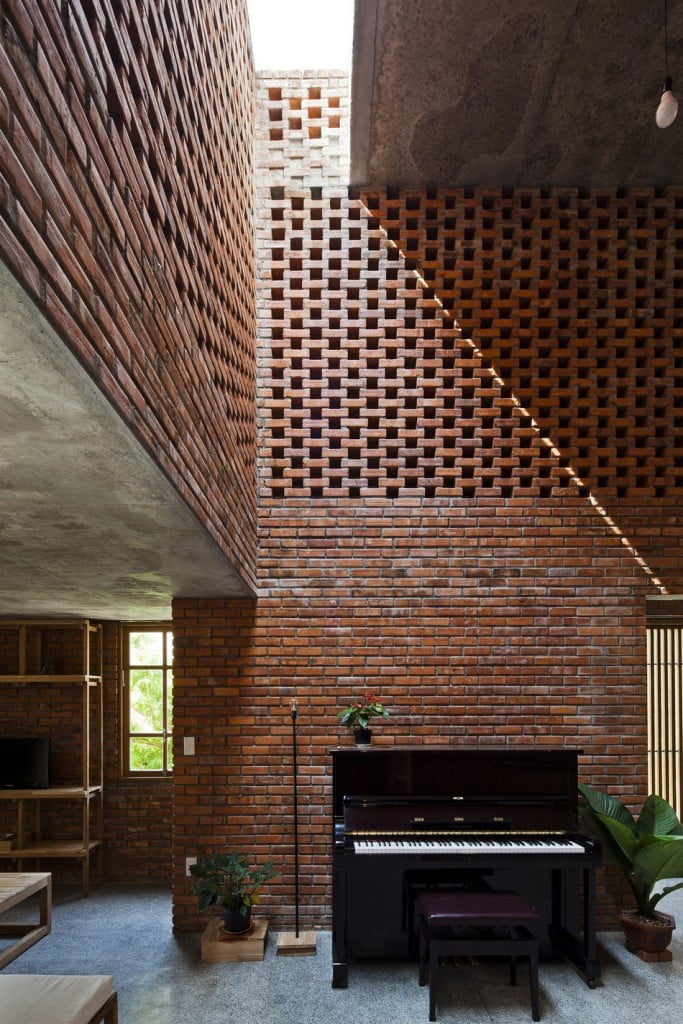
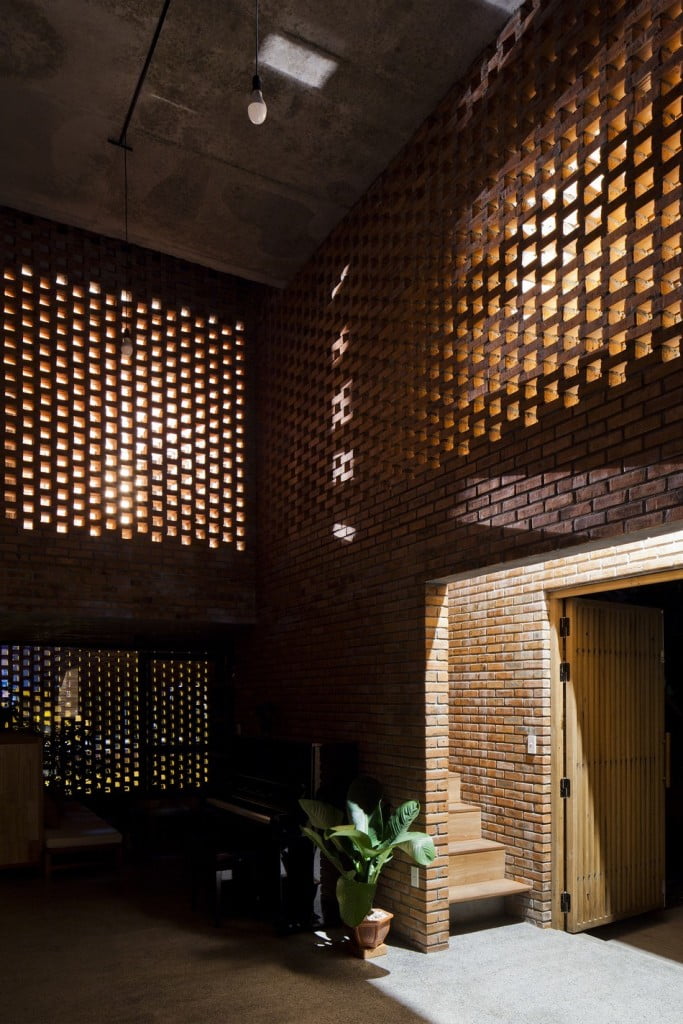

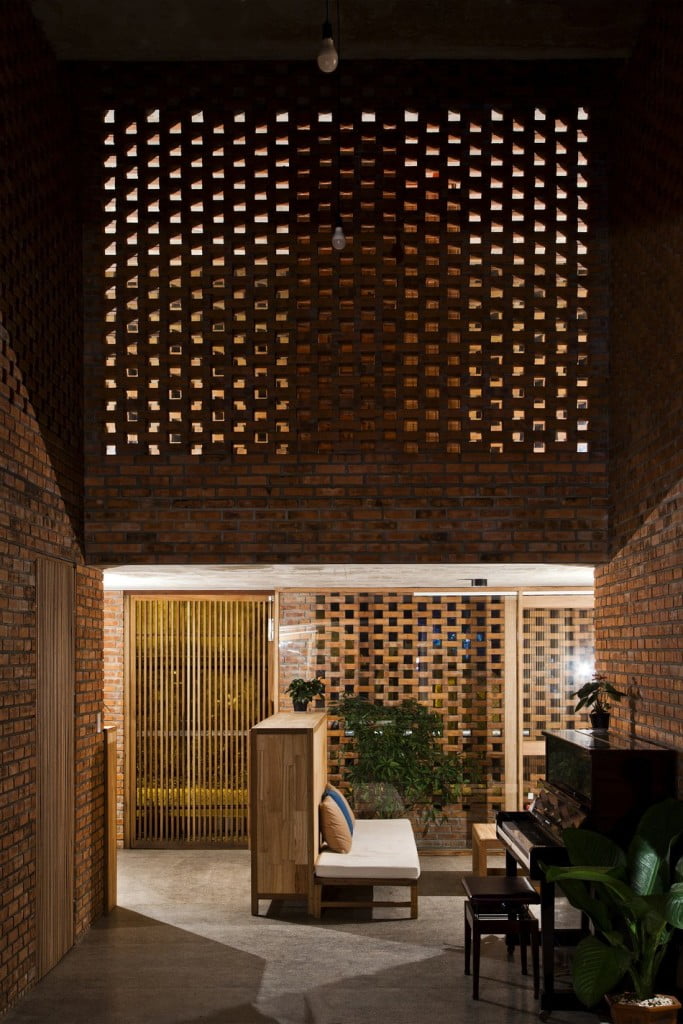
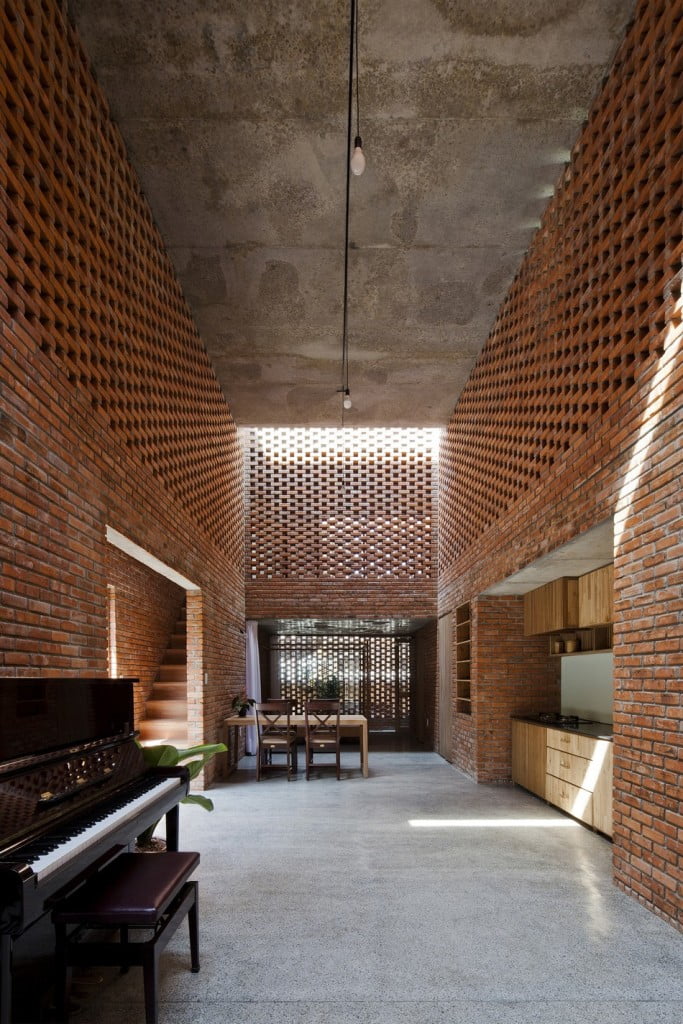
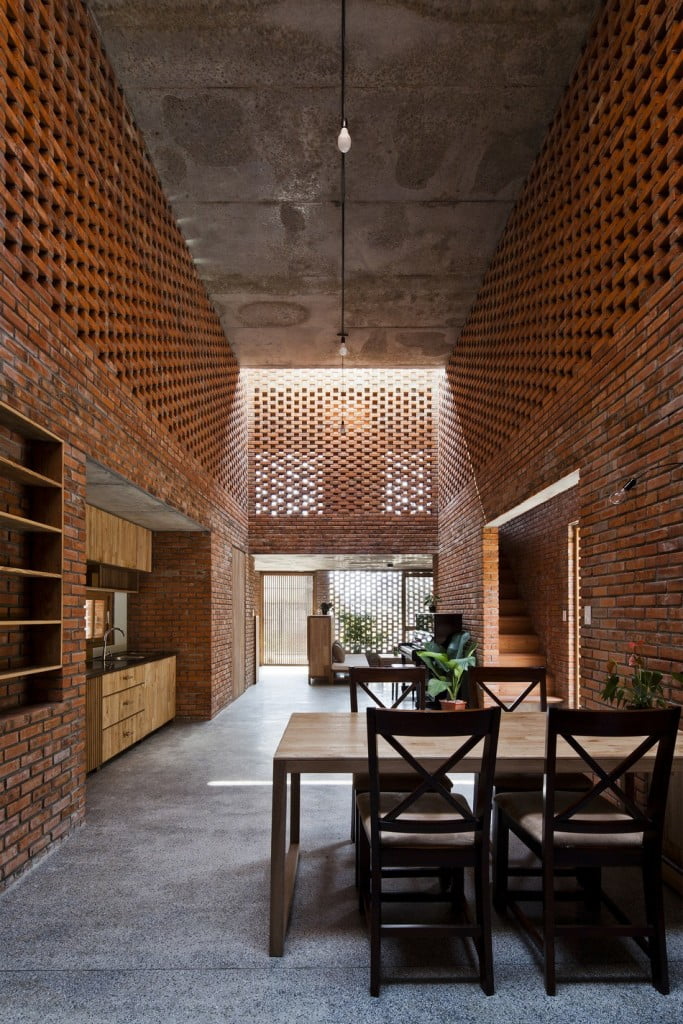
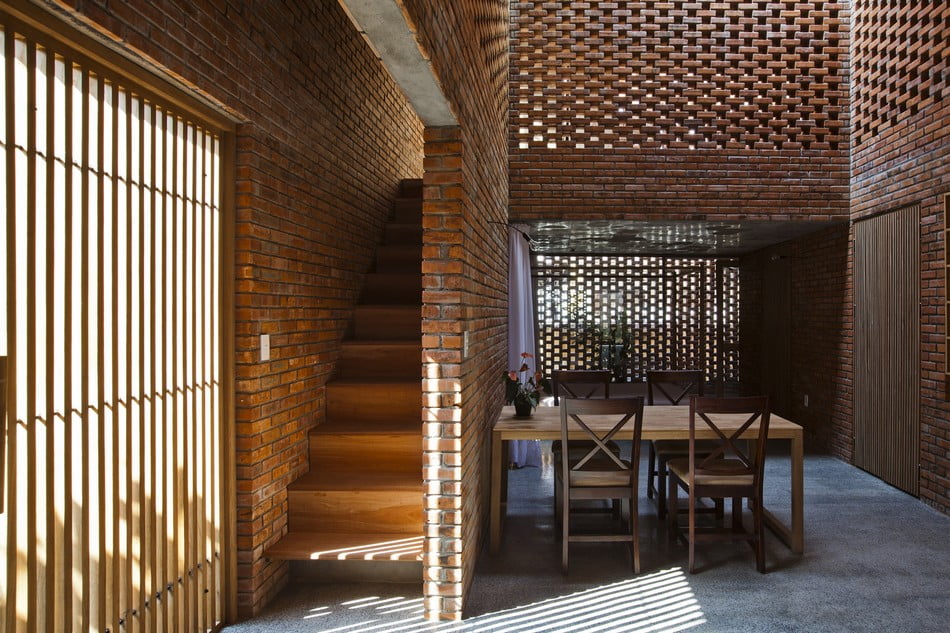

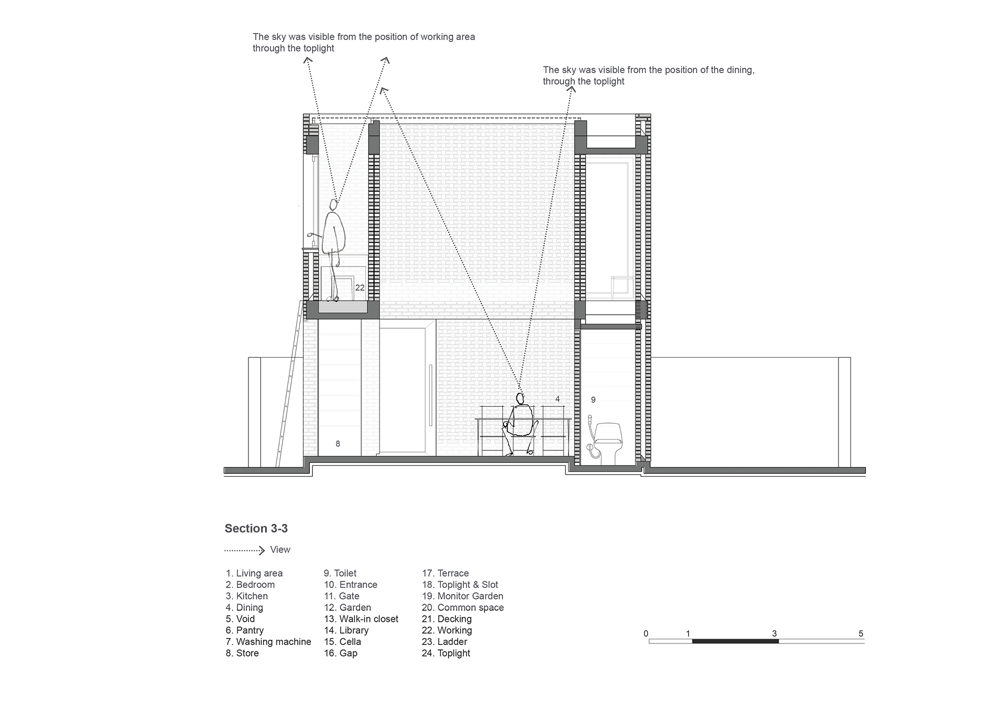
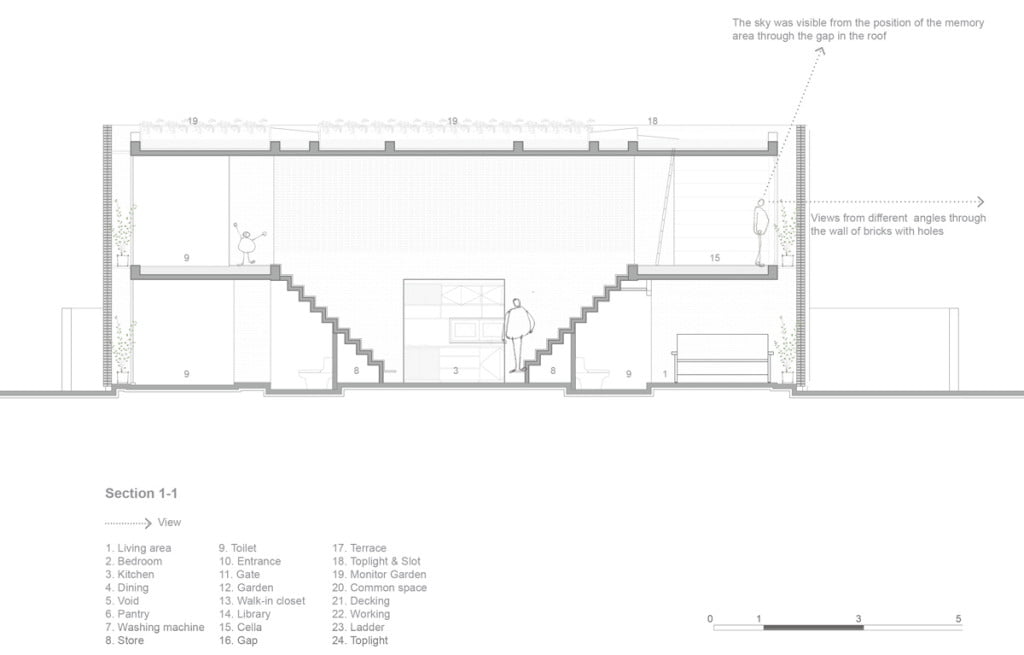
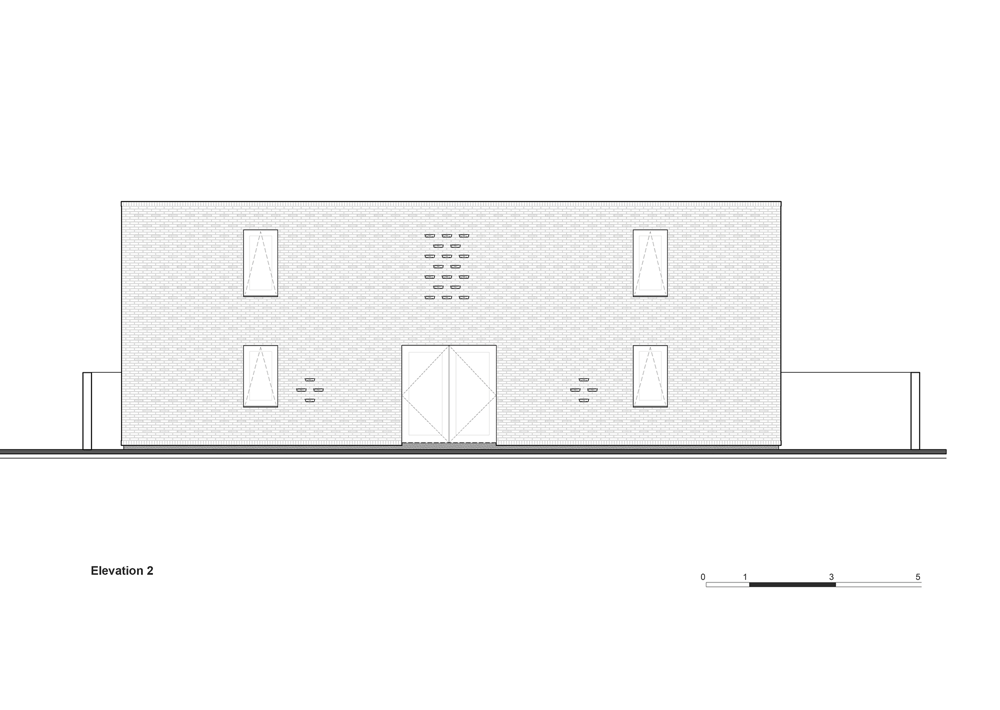
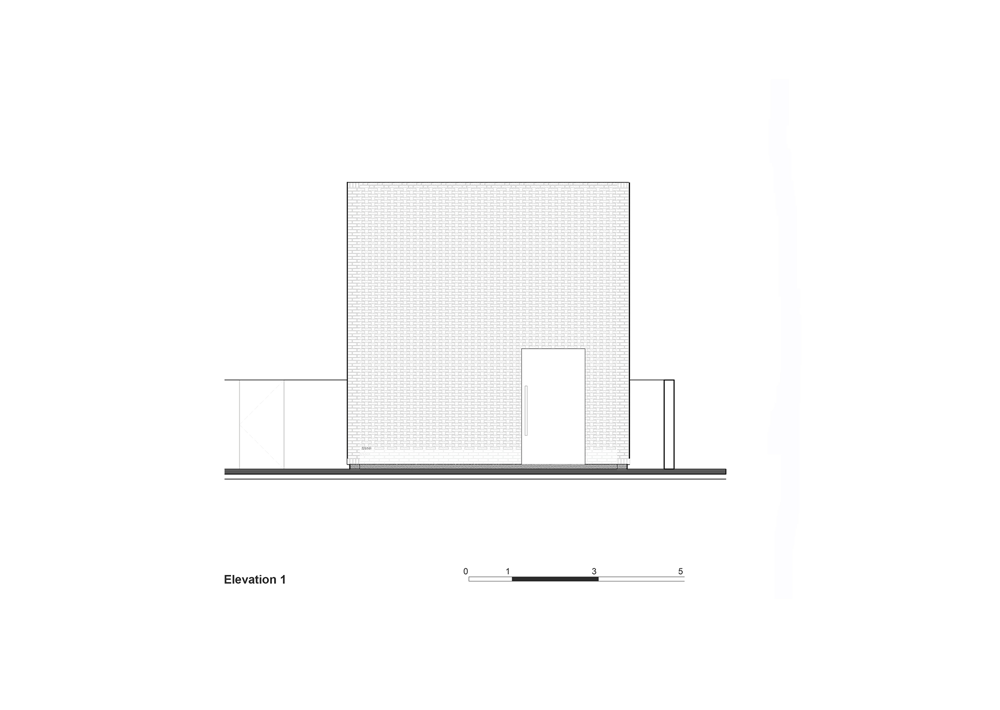
Overall Conclusion:
The house was planned to have “a sharing space in the center where a cooking counter, a dining table, and an entertaining corner are found. This lobby then leads to different functional areas in the house such as the rest room, the living room, and the bedrooms.
Enjoy the photos and tell us what you think!

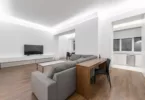



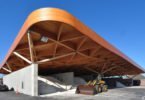

Leave a Comment
You must be logged in to post a comment.